- Home
- Media Kit
- MediaJet
- Current Issue
- Past Issues
- Ad Specs-Submission
- Reprints (PDF)
- Photo Specifications (PDF)
- Contact Us
- PRIVACY POLICY
- TERMS OF USE
![]()
ONLINE
![]()
ONLINE

Creating Something Different
Editors’ Note
Pierre-Vincent Girardin, often referred to as Pierre Girardin or PVG, is a rising star in Burgundy wine production. He is the 13th generation of his family to make wine in the region. In 2017, he launched his own domaine, Domaine Pierre Girardin, after his father, Vincent Girardin, sold his domaine. Pierre-Vincent focuses on producing wines that express the terroir, emphasizing purity, precision, and balance.
Winery Brief
Domaine Pierre Girardin (vincentgirardin.com) began with 4.5 hectares of prime vineyard sites retained by his father, Vincent Girardin, after selling his own estate. Pierre-Vincent has since expanded his portfolio by sourcing grapes from top growers across Burgundy, allowing him to produce wines from prestigious appellations such as Puligny-Montrachet, Volnay, Pommard, Corton-Charlemagne, and even Montrachet. His winemaking philosophy emphasizes purity, elegance, and terroir expression. He uses custom 456-liter barrels to minimize oak influence and preserve aromatic freshness in his whites, while his reds are crafted with minimal intervention to highlight finesse and silkiness. The wines are unfined and unfiltered, reflecting a commitment to authenticity and precision. Practicing organic viticulture, Domaine Pierre Girardin has quickly earned acclaim for its balanced, expressive wines and is considered one of the most promising new producers in Burgundy.
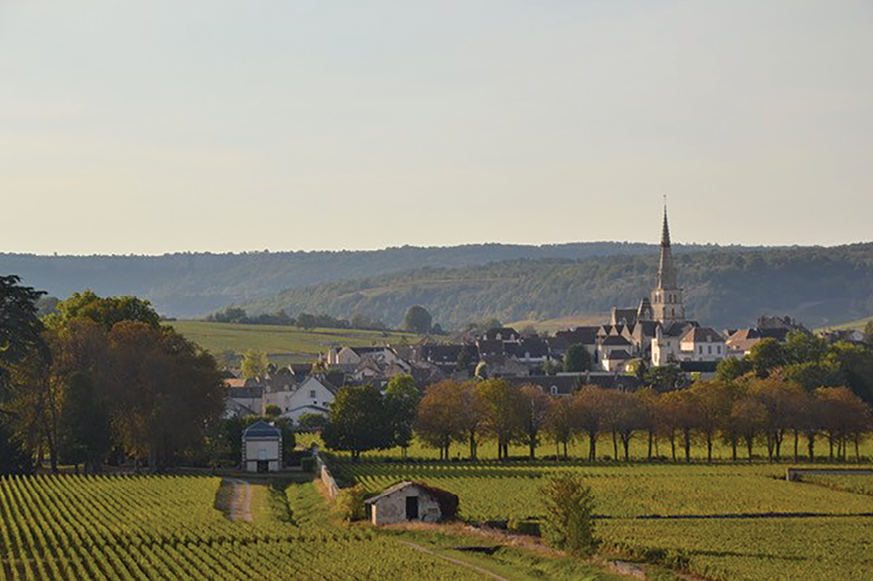
Vineyard of Domaine Pierre Girardin
Will you highlight the history of Domaine Pierre Girardin?
The domaine was born in 2016. I started the journey at my 18th birthday, and the first vintage produced was 2017, the year following the beginning. In my teenage years, my parents had already sold their previous domaine, Vincent Girardin, also based in Meursault, so they had more time to do other things. The family had always been into agriculture, so my father bought cereal farms and a wagyu cattle farm after leaving the wine world. But when I turned 14 years old, I helped my father in the vineyard during the weekends and holidays, and two years later, when I was old enough to taste wine, which means 16 years old in Burgundy, I started tasting the full family cellar with my father. I needed to build my palate and find my taste. The result of hours of tasting and sharing formed a clear vision of my style and my ambitions. I was lucky enough that my parents trusted me at such a young age, so I took the opportunity to express myself and make it happen.
I started with 4 hectares of vines for the first vintage, and I didn’t expect the results of my new way of farming and winemaking to produce results that fast. In my mind, it would have taken 15 years to reach that point. Fortunately, within five years, with Burgundy wines skyrocketing on the wine market, I had a lot of opportunities and all the work we did started paying off. I was then able to purchase and rent some more vineyards in Meursault, Puligny-Montrachet, and Chassagne-Montrachet. In 2025, the domaine is now 13 hectares. The main turning point was in 2019 when my team and I changed the farming method to make the vines grow higher. That decision definitely pushed the quality of the grapes and allowed us to produce another level of unique wines.
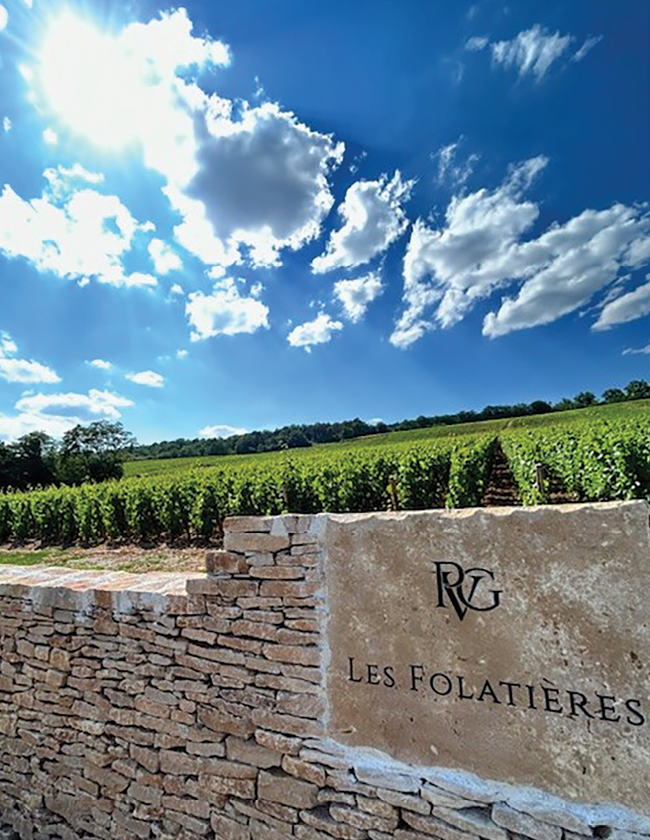
Pierre-Vincent Girardin’s vineyard
What have been the keys to the strength and leadership of Pierre Girardin?
The family name was already famous in the wine world, but I wanted to create something different. The clear vision I have really helped to start at a very young age. The fact that a 19-year-old teenager was able to make decisions really helped to empower leadership. I asked, and still ask, for very precise products from all of my suppliers – only the best choice of everything. Being respected in the world of farming is tough because most of the actors are experienced and take advantage of that and are able to sell you whatever they want. My new vision helped to truly accomplish what I wanted. It gave me confidence and created trusted relationships with all my suppliers. So, my age could have been a barrier to my ascension, but it was actually a “launching pad” that helped me to go faster. When you choose a different path than others and it works, you become rare and exclusive, and I think that’s what happened with my new farming and winemaking style.
Another key to the leadership of Pierre Girardin was the distribution I set up for my different markets. My target was a huge diversification for sales, and I reached 85 different markets/countries in the world so far this year. My business model of having a range with a lot of lieux dits (small vineyard plots) but very small quantity of each cuvées helps me to provide very limited quantities to each country to make sure my bottles are not piled up in a few cellars, but drunk or wisely allocated. The average production of a cuvées at the domaine is 1,400 bottles, split by 85, meaning 16 bottles per wine per country. Then you can decide whatever your brand needs in terms of production or distribution. I think choosing your customers is the real strength of a brand.
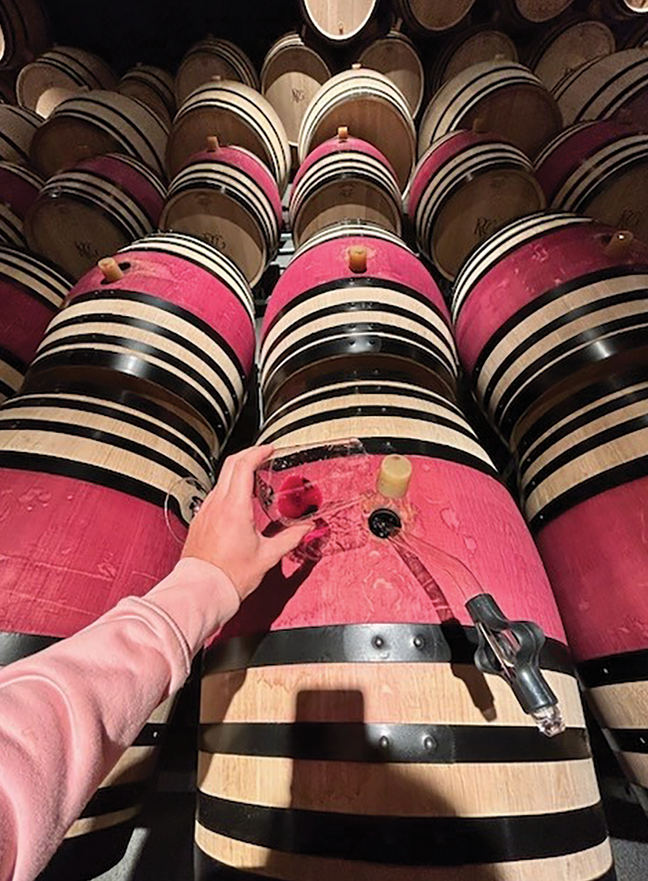
Pierre-Vincent Girardin’s barrel tasting
Will you provide an overview of Pierre Girardin’s wines?
The challenge was to make unique wines. In classic Burgundy, whites are not extracted and are light, so they are then aged in a way to make them fatter. Reds are usually extracted for a few weeks and have structure. My goal is doing the opposite. My father taught me all the technical skills to make wine, so I could make wines at the antipodes of what he did. Through eight vintages produced so far, six of my harvests started in August, and so will the 2025 vintage. This parameter/setting influenced my vision a lot. I just couldn’t do what people have been doing for decades if nature does not behave in the same way. To be truly different, I decided to stop any extraction on the reds. That means no punch down, no pump over, no delestage, and no refining or filtration. Doing less, taking more risks – these were the keys to flowerfully perfumed wines without any tannic structure. These decisions and risks are hard to make and take in Burgundy when working on high-class appellations, but it was worth trying since you will never learn it in school. I needed to figure it out myself.
With the white wines, I wanted them to be more tannic than my reds which is such a hard thing to do with the climate getting warmer every year. They also needed dry extract in order to be able to age over the years, and for the acidity to be lively and mouthwatering. The key was to create a new vineyard management method that allowed me to pick earlier than anyone else in Burgundy to get a special balance of the fruit and keep the healthy part of it and the acidity.
How has technology impacted the winemaking process?
Technology will either bring you to another level or let you fall. I don’t do things traditionally; I make choices because I understand what I am doing. What technology brought me as a young winemaker was curiosity. When I settled the domaine in the new winery in Meursault, I invested in a laboratory so I could translate my tastes and feelings into numbers. From that point, I was able to tell what farming brings to the grapes and then my vision on winemaking was brighter. Technology was a game changer also for conditions of aging, temperature control, and hygrometry control which are not luxury things anymore, but a must considering the climate change. It helps in creating the perfect cellar atmosphere to get fermentations in pristine conditions. If we look further, these technological additions in the winery helped me to avoid the use of any oenology product, making the wines naturally stable and keeping their soul and DNA.
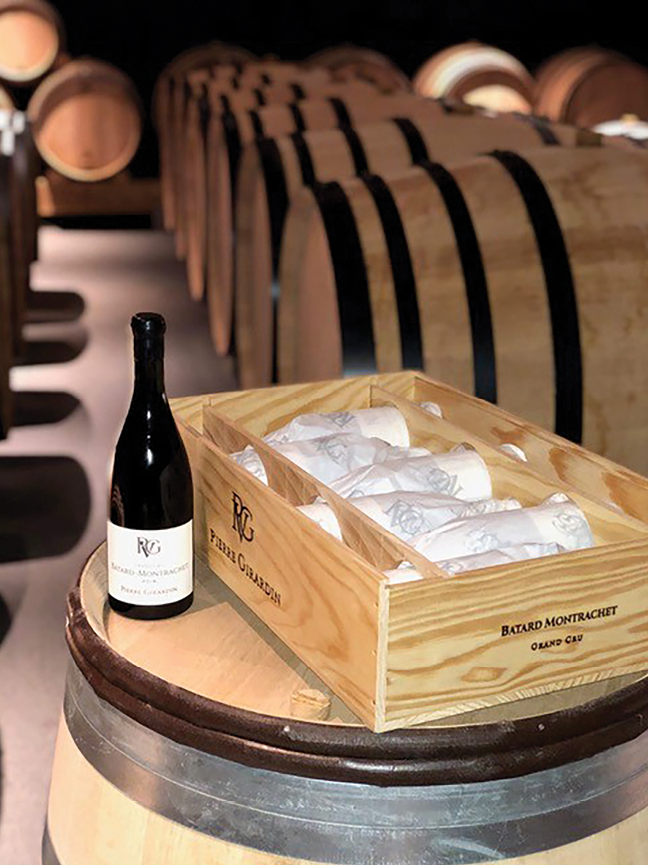
Pierre Girardin Batard Montrachet
Will you discuss Pierre Girardin’s commitment to sustainability?
Farmers and thus winemakers belong to an industry that “pollutes” the most, so of course we feel concerned when talking about sustainability. First about nature: the domaine farms have been organic since 2018 to avoid spreading chemicals. After several vintages, the vines are used to it and deliver perfect fruits thanks to these methods. Using natural elements to spray the vines is necessary in the process of making unique wines, as copper and sulfur will influence the thickness of the skins and reactions during fermentations. So, it is true to say that organic wines have better potential than conventional ones.
A new adventure in Jura for PVG wines definitely opened my eyes wider than ever concerning the effects of climate change. It is hard to keep a perfect natural balance for white wines nowadays in France. Nonetheless, a few natural techniques are very effective and sustainable. The vineyard management in Jura creates vineyards that reach 2.20 meters, which is 1 meter higher than Burgundy vineyards. So, the goal for the future is to let the vines grow as high as they want toward the sky and avoid any trimming. This avoids any stress to the plant and creates a huge canopy with more shade. The vibe and energy in the vineyard have nothing to do with classic viticulture and are really enjoyable for both plants and people working in the vineyard. Methods like these also increase the life potential of the plant and I hope it will help my children to take over in better conditions despite the new weather conditions in Europe.
Did you always know that you would pursue a career in the wine industry?
Definitely not. I grew up in my parents’ winery, which I didn’t like at all because as a kid I barely saw my parents. At that time, I just couldn’t understand the passion and the amount of work that you had to put in to become the best winemaker. So, before I turned 14, I felt I didn’t want to copy/paste what my parents did. That’s why when they asked my brother and I if they should sell their winery and wine business, we said “yes.” Thirteen years later, there is no regret at all. It was the best thing that could have happened. It was much more challenging to start from scratch, but that’s how I was able to express my vision and my personality.
The fact that I got into this during my teenage years also shows that I was making my own decisions and I wasn’t forced to keep the family legacy. This is happening to a lot of farmer and winemaker families where one of the children, if not all of them, have to help or take over what their parents did. But sometimes, it is hard to feel at ease when it’s not your project. So, in the future, my children will decide on their own careers, because making wine is not easy and if you’re not 200 percent focused on your passion, you will never make great wines.
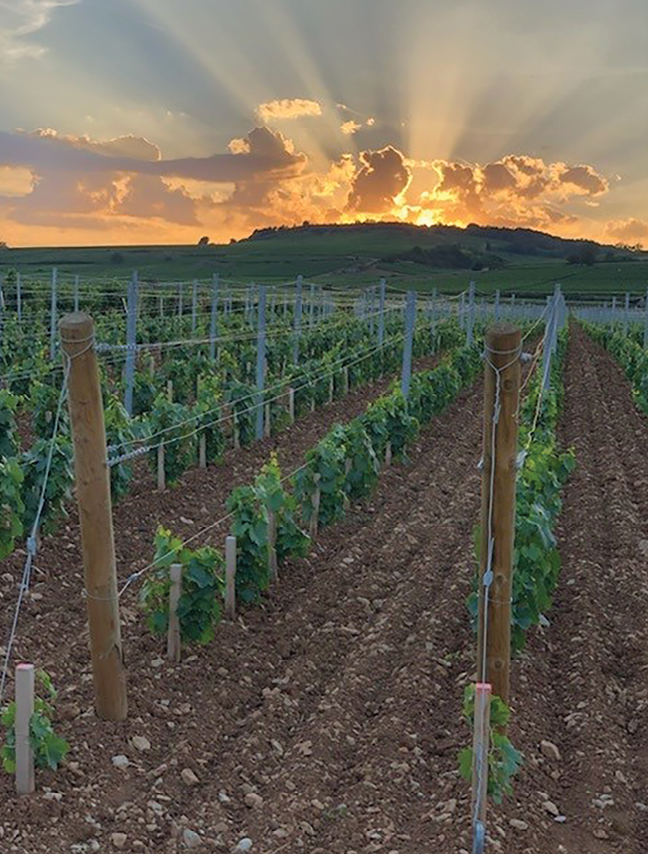
Sunset over young vines
What do you enjoy most about the business?
What I like the most about my job is that I create something unique and uncopiable. Highlighting a product that comes from nature activates my passion about this job every single day. So, the creation is the key point; that notion of endless ideas and stimulation is what drives me every day. It is the moment you turn a universal product into an exceptional one; the birth of the DNA and the soul of your wine is the true accomplishment of my job, because that will hold up through time. Even if the domaine disappears one day, the work of the team that created those wines will remain and last forever.
What are your priorities for Pierre Girardin as you look to the future?
I’ve been investing in Jura for three years now. It is hard to develop and scale in Burgundy. They are too many actors in the region to be able to develop as I would wish. The Jura wine region is skyrocketing in terms of quality and soon will be notorious. The prices there are still low, so it is time to invest. The potential there is huge, and grape varietals are the same as in Côte de Beaune. This region is closer to the French Alps, so the climate is perfect to produce vibrant white wines as there is more rain over the year and the average temperature is lower. The philosophy of all producers there is all about nature and agronomy, so the vines age better than in any other French wine region. We bought vineyards that are 70 to 100 years old that are in better shape and produce more regularly than in Burgundy. I’m aiming to use both nature and agronomy to push the domaine into another dimension. The contribution of the Jura project will make my farming very close to the natural agronomic approach improving the shape of my Burgundy vineyard. In addition, my knowledge and my Burgundy method will help produce wines that have never been produced in Jura before. This project is no longer a side project and truly embodies the future of the domaine in order to cope with the limits of Burgundy.![]()